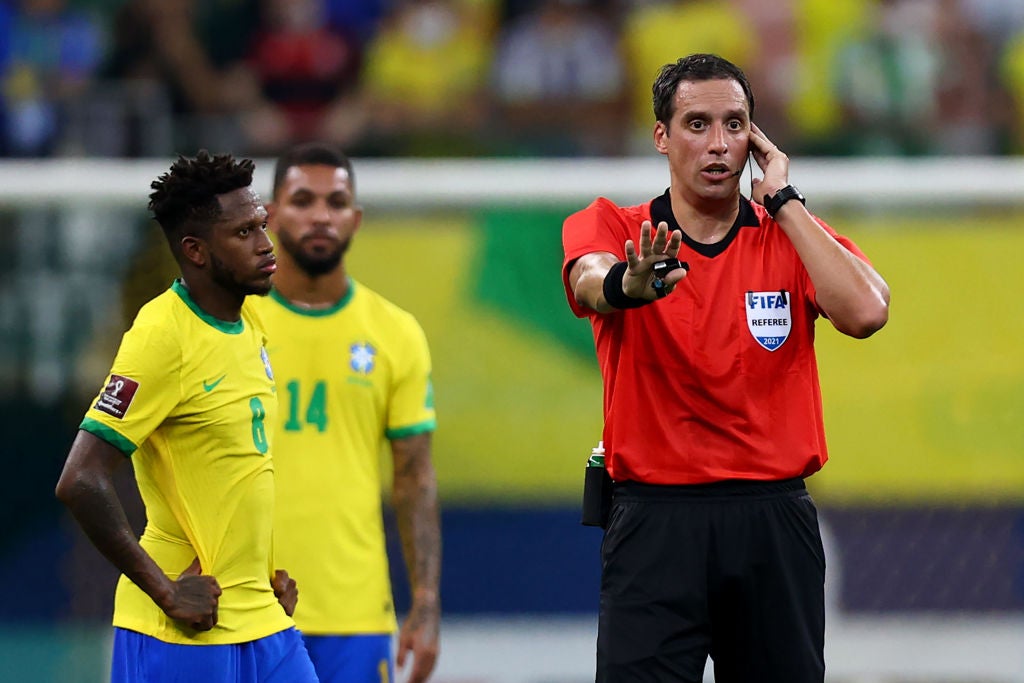Qatar World Cup to feature semi-automated offside technology - with fans to see final decision image
Officials believe the time taken to reach a decision will be lowered by up to 70 per cent but the final call will still rest with the referee and his assistants

Your support helps us to tell the story
From reproductive rights to climate change to Big Tech, The Independent is on the ground when the story is developing. Whether it's investigating the financials of Elon Musk's pro-Trump PAC or producing our latest documentary, 'The A Word', which shines a light on the American women fighting for reproductive rights, we know how important it is to parse out the facts from the messaging.
At such a critical moment in US history, we need reporters on the ground. Your donation allows us to keep sending journalists to speak to both sides of the story.
The Independent is trusted by Americans across the entire political spectrum. And unlike many other quality news outlets, we choose not to lock Americans out of our reporting and analysis with paywalls. We believe quality journalism should be available to everyone, paid for by those who can afford it.
Your support makes all the difference.Semi-automated offside technology will be used at the World Cup in Qatar this winter, Fifa has announced.
Fifa estimates the technology will help to cut decision-making time on offsides from an average of 70 seconds using current video review methods down to between 20 and 25 seconds.
Crucially, Fifa intends to show spectators in the stadium and viewers at home a 3D illustration of the decision after it has been made, most likely at the next break in play after the incident.
Pierluigi Collina, the chairman of the world governing body’s referees’ committee, hopes the new system will be as “praised” and accepted as goal-line technology has become, with a similar margin for error.
He said GLT had been accurate to within three centimetres when it was introduced and was now accurate “to a few millimetres”.
He was keen though to insist that the on-field referee, and the video assistant, were still vital in validating decisions, and at pains to manage expectations on the speed of the new system.
“I’ve heard a lot about ‘robot referees’. I understand sometimes this is very good for headlines, but this is not the case,” the Italian said.
“The match officials are still involved in the decision-making process, as the technology gives an answer only when a player is in an offside position.
“In other words, the assessment of interfering with an opponent remains a match official’s responsibility.
“Similarly, I heard (people say it could take) four or five seconds to get the offside decision. Certainly, we cannot get an answer within four or five seconds, this is a wrong expectation.
“We will be faster, we will be more accurate - these are the objectives of the semi-automated offside technology.”
Fifa first received demonstrations of semi-automated offside technology in 2019 and trialled it at the Arab Cup in Qatar last year and the Club World Cup in the United Arab Emirates earlier this year.
Some testing also took place at Manchester City’s Etihad Stadium.
The system relies on 12 cameras installed underneath the roof within each stadium, all 100 per cent synchronised with each other. Optical tracking data looks at 29 data points on each player, covering their limbs and extremities, plus the position of the ball, 50 times per second.
The World Cup ball houses a sensor which transmits data to the video operations room 500 times per second.
This technology combines to track the limbs of each player and also the precise ‘kick point’ in real time using artificial intelligence.
When an offside is detected by the system, an alert is relayed to the offside video operator, with the lead VAR then manually validating the kick point and the offside line.
The VAR then communicates what he or she can see to the on-field referee. The referee can still use the monitors at the side of the pitch to check issues such as interference with play or other infringements which may render an offside call irrelevant or inaccurate.
Join our commenting forum
Join thought-provoking conversations, follow other Independent readers and see their replies
0Comments